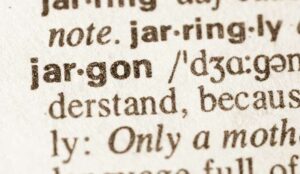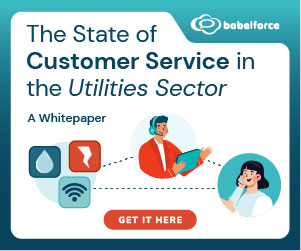Jeremy Watkin, on behalf of 8×8, discusses how to help your advisors reach full proficiency more quickly.
When I started out in a customer service call centre nearly two decades ago we had this homegrown ticketing system that was completely archaic by today’s standards. But it had this feature where agents could be placed in “QA mode” so every response to a customer had to be approved by a supervisor before being sent.
Perhaps this feature existed because my training manual was exactly five pages long (true story) and we were largely expected to learn on the job.
Regardless, even as our new hire training programme matured, this is a feature I’ve often wished the current popular ticketing systems had.
Bridging the Training-to-Proficiency Gap
Why was this feature so valuable in my contact centre?
First of all, it allowed new agents to make honest attempts at responding to real-life customer scenarios while putting a check in place so customers didn’t receive wrong or incomplete responses.
Second, it allowed me to sleep better at night by easing new agents into their role without negatively impacting the customer experience.
While ensuring correct, thorough, on-brand responses was a plus, it also created a bottleneck that added delays to customer responses — the lesser of two evils perhaps, but a common driver of customer dissatisfaction no less.
This highlights the very real need for contact centres to bridge the gap between the new hire training class and fully proficient agents. And depending on a variety of factors, including the quality of training, job complexity, robustness of documentation, and availability of supervisors for floor support, the ramp to full proficiency may range from a few weeks to a few months for most contact centres.
In this article, I’ll share three recommendations for bridging and shortening this gap and where technology can help.
1. Crowdsource Quality Assurance for Written Channels
I’ve worked with a number of different customer service teams that wanted to make sure that every email sent to a customer was approved by a supervisor before sending it.
In the absence of technology to support this, they had agents draft their customer responses in a ticket note and assign to their supervisor for approval.
While this method got them part of the way to the goal, there was no automatic way to track when agents were fully proficient and ready to graduate.
Some teams solve this by having a supervisor complete a quality form to score the quality of responses, but this might mean double work on the part of the supervisor, requiring extra resources most contact centres don’t have.
Klaus, a company that provides conversation review tools, is rethinking contact centre quality by enabling teams to create a peer-reviewed quality programme where tenured agents score interactions for their newer peers.
Also, they’ve engineered an approval process similar to what I described earlier, which reduces the bottleneck when responses are approved by peers and not just supervisors.
2. Modernize Quality Coaching for Voice With Speech Analytics and Social Sharing
Quality assurance for voice can be a challenge to institute an approval process similar to the one I shared in the first point.
Sure, a supervisor can monitor live calls in the phone system or “side jack” (a term for connecting a second headset using a splitter) with an agent by sitting next to them, but this is more of a spot-check than an approval process. A modernized quality tool can help bridge this gap.
Here are some of the features you can expect:
- Use speech analytics to identify the right calls to review. I’ve spoken with more than one contact centre leader who adopted speech analytics only to let it sit on the shelf. Dust it off and get started! This can be an invaluable tool for quality teams to identify the best calls (e.g. those with negative customer sentiment, specific keywords, or other negative patterns) to review, giving agents feedback that will maximize learning and development.
- Pinpoint specific moments in calls for coaching. The traditional quality assurance timeline, where a supervisor evaluates a call and the agent has completely forgotten the conversation by the time they’re coached, is flawed. A modern process allows the supervisor to leave specific feedback for agents at specific points in a call so it’s paired with a call recording for easy recall.
- Save and share best practices with the entire team. In a world where most of us turn to YouTube to learn how to do things, contact centre training still involves too much death by PowerPoint. As you come across excellent call examples (or emails, chats, etc) save those and share them with the entire team so they can learn best practices.
3. Answer the Questions Agents Are Asking Once and for All
Yes, I know “improve self-help” is a common recommendation right now in customer service circles so I’ll try to keep this point fresh.
In most contact centres where I’ve worked, agents want to provide customers with accurate information and won’t respond unless they are certain the information is correct. This means that contact centre leaders should worry less about agents sending incorrect responses and more about helping them quickly find answers to their questions.
Here are some ideas to achieve this:
- Track every question agents ask and answer it only once. Regardless of where agents are asking questions, whether it’s in person, via Slack, or somewhere else, every time an agent asks a question, make sure that question and answer are documented and agents are trained to search for it. A supervisor’s aim should always be to only answer each question once.
- Store questions and answers in a knowledge base or LMS (learning management system). Log every one of those questions in your knowledge base so they can easily be searched in the future. Most knowledge bases have the ability to specify whether or not an article is customer-facing.
- Use AI to find answers faster and more accurately. There are so many interesting AI applications in addition to customer-facing chatbots. I’m particularly interested in applications that use natural language processing to understand the question a customer or agent asked, and machine learning to predict and present the correct answer to the agent.
- Also, look at AI for voice. An even tougher nut to crack here is on the voice side to have the AI listen to a voice conversation and give agents advice in real time on how to respond. Balto Software is working to solve this by presenting agents with helpful tips for successful outcomes during voice conversations.
As I reflect back on my own experiences in bridging the gap between the training classroom and full proficiency I realize that some of this is symptomatic of a weak training programme.

Jeremy Watkin
As a customer service leader, I’m willing to own up to that but will also stand by the claim that there are some things that are best learned in real-life customer service situations.
My hope is that these ideas I’ve presented give managers tools to help agents find answers faster, learn from their peers in a collaborative environment, and receive better and more timely coaching all while positively impacting the quality and timeliness of the support customers receive.
Author: Robyn Coppell
Published On: 28th Sep 2020 - Last modified: 29th Sep 2020
Read more about - Guest Blogs, 8x8

















